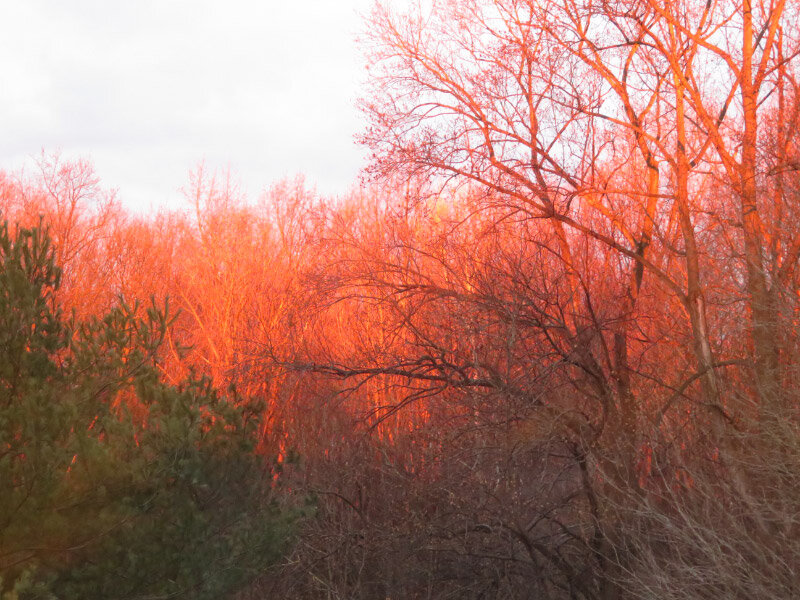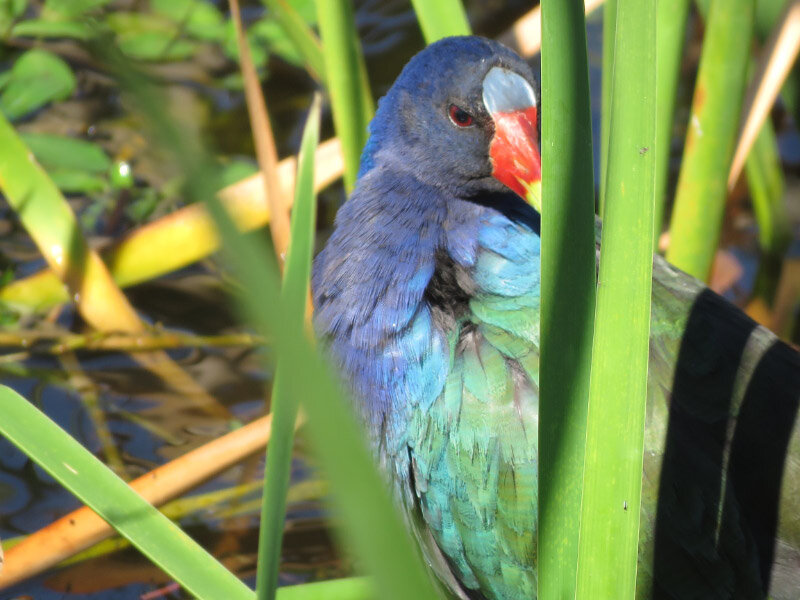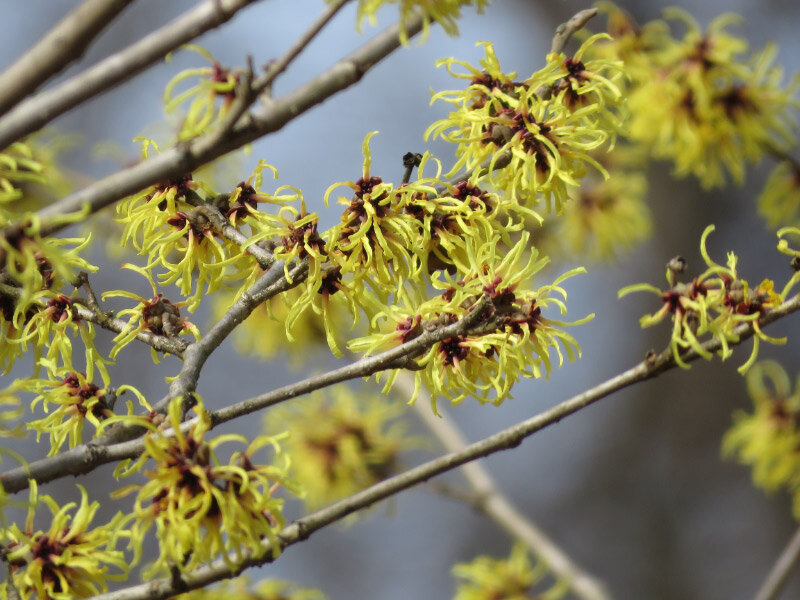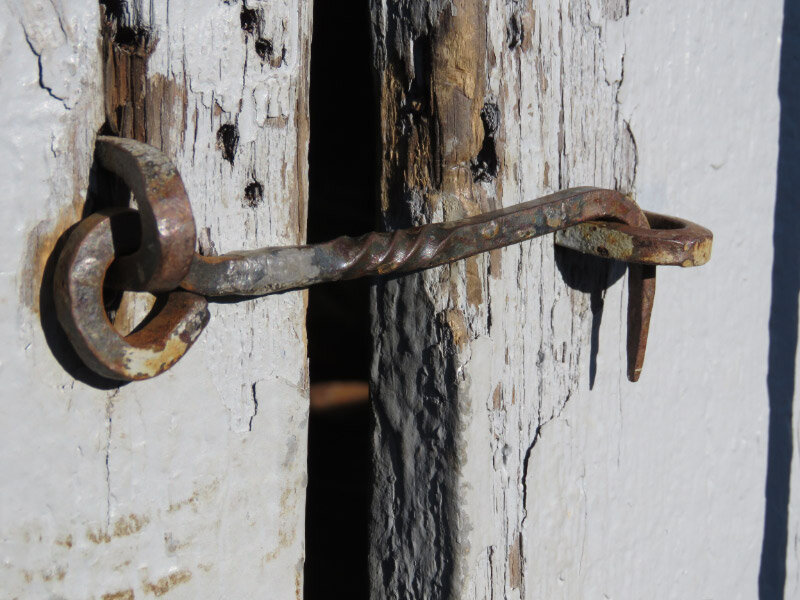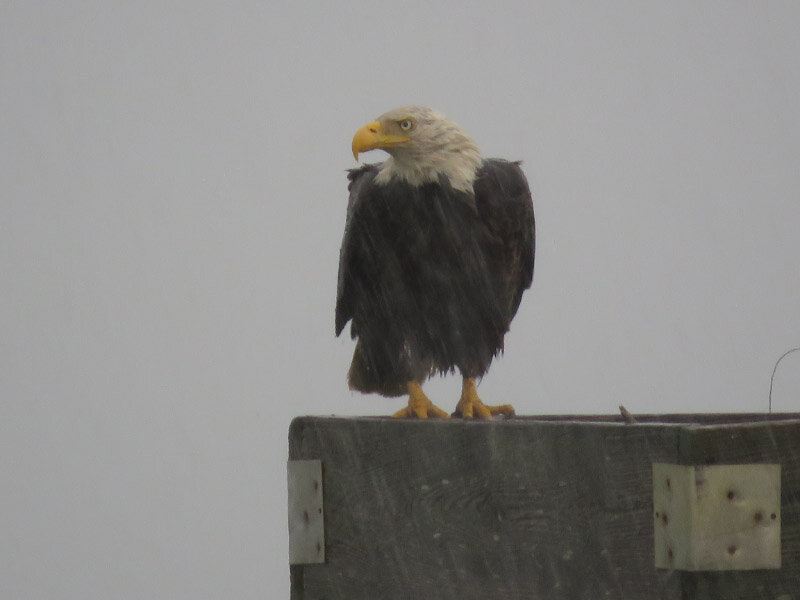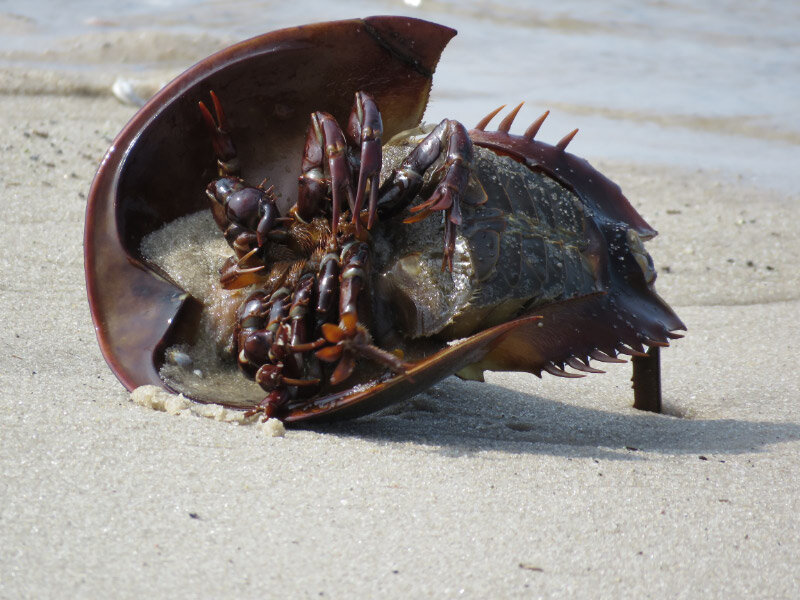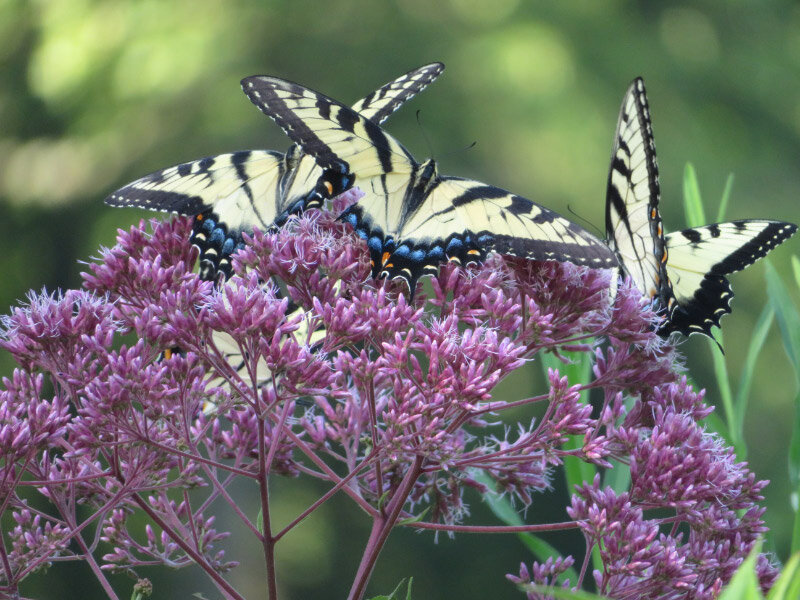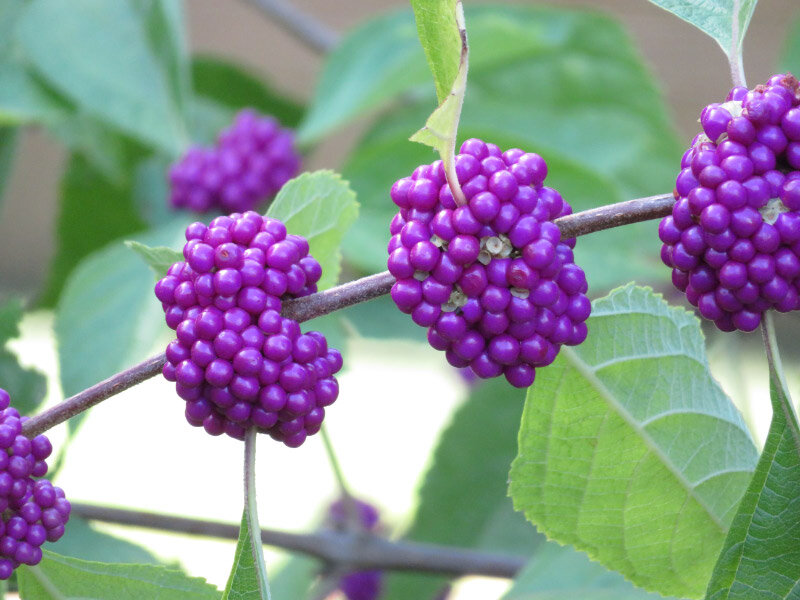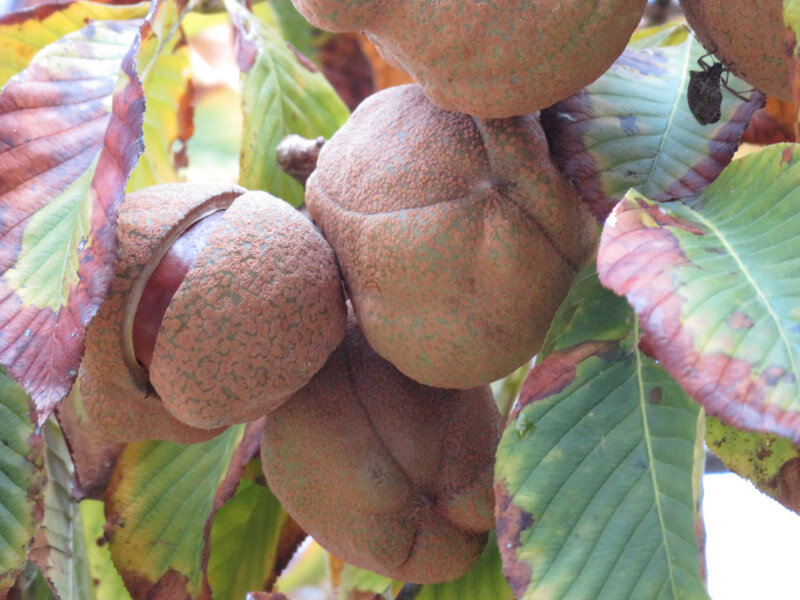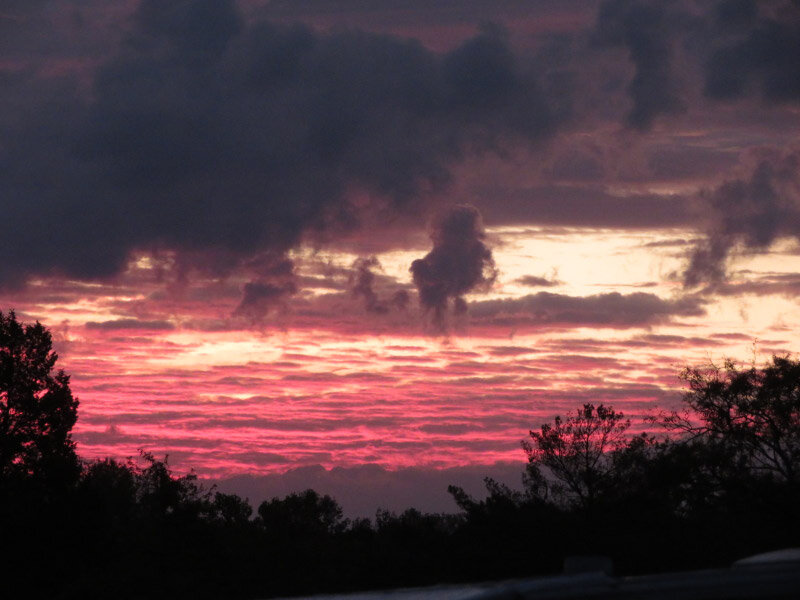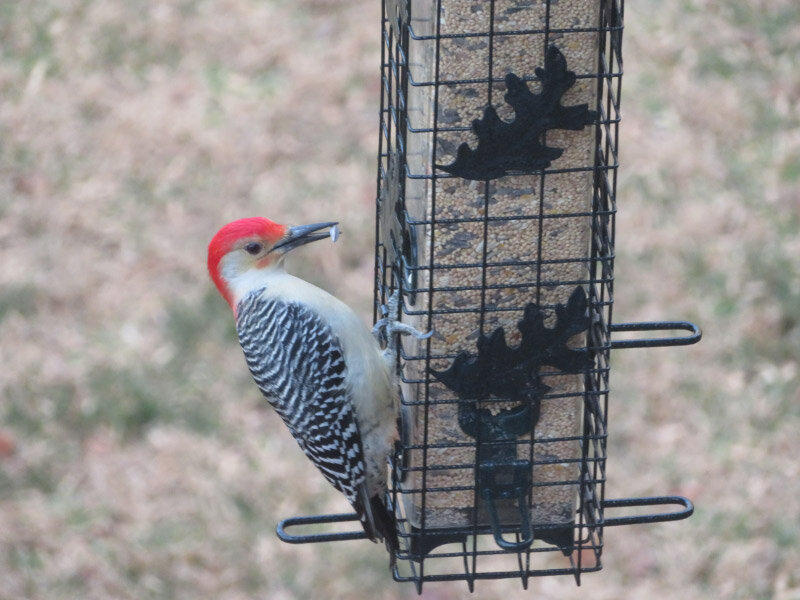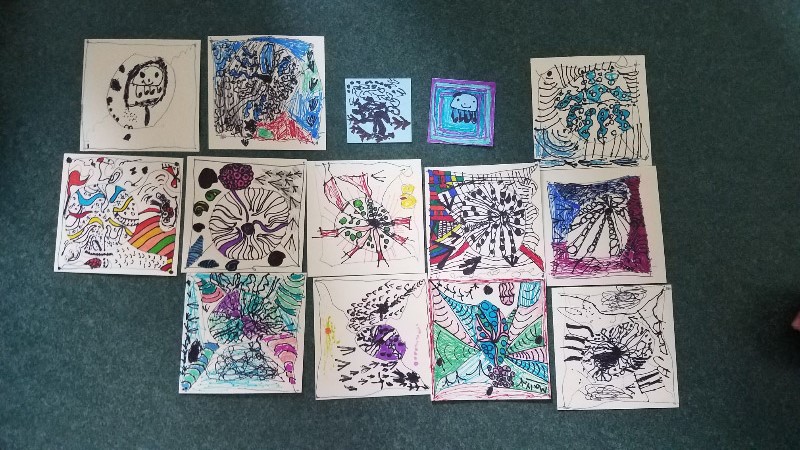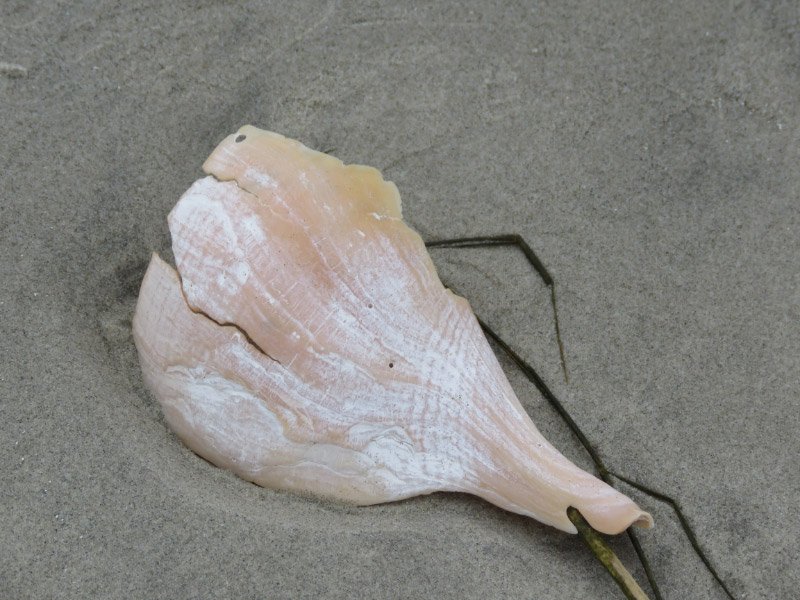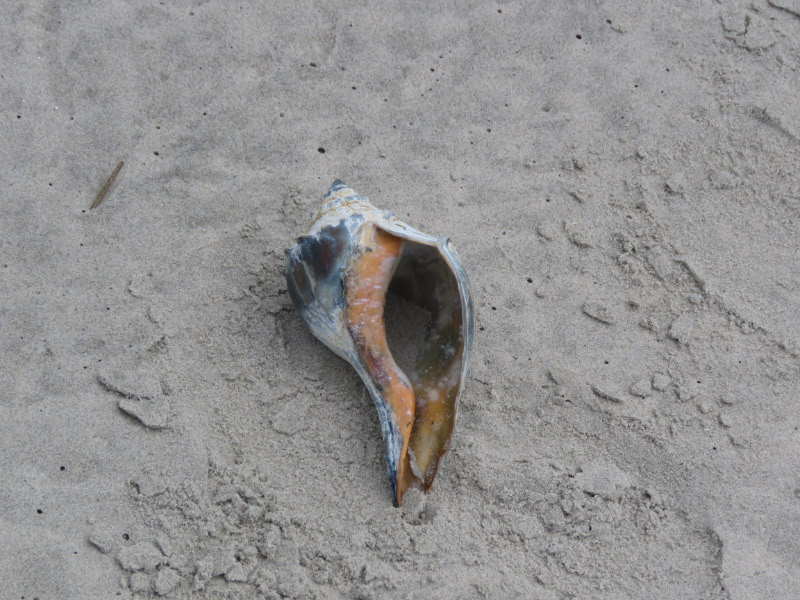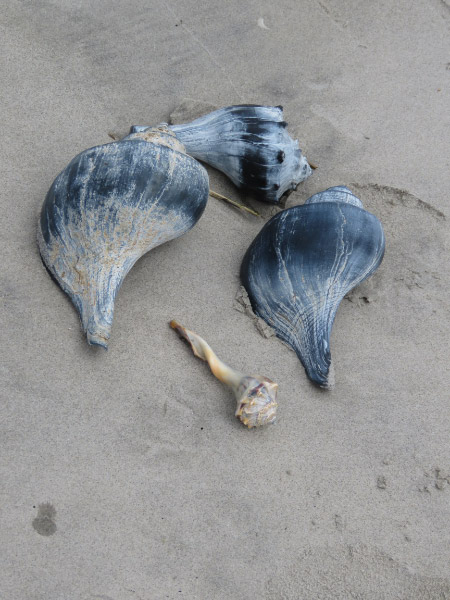My 2019 in Review - Photos
/I managed to pick 26 pictures that were my favorites of the year either because I liked the way they turned out or because of a memory they evoked. I noticed some themes after I had collected them.
All except one are outdoors (although two were taken through my office window so I was standing indoors when I took them).
Many were pictures of plants: bare trees, witch hazel, red yucca seed pod, button bush, joe pye weed, cardoon, sunflowers, beautyberry, and red buckeye (nuts).
7 were pictures of animals or evidence of animals (other than birds): whelk shells, horseshoe crab beginning to roll over, northern red-bellied cooter (turtle), tiger swallowtail butterflies, cicada, spider, gray tree frog.
6 were pictures of birds or feathers: pelican, ibis, gallinule, bald eagle (wet), red-bellied woodpecker.
There are two sunrise pictures: one from my front porch on the first day of 2019 and one from October when we were camping in southern Virginia.
More than half the pictures are from places I go that are close to where I live (i.e. not requiring an overnight trip).

